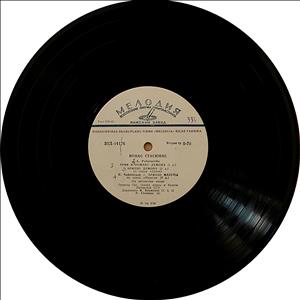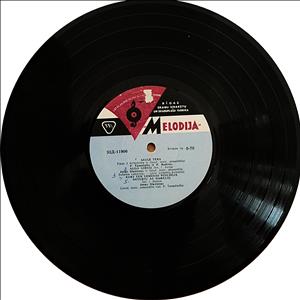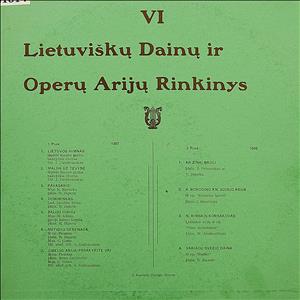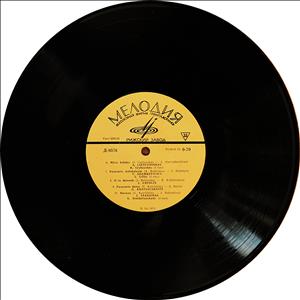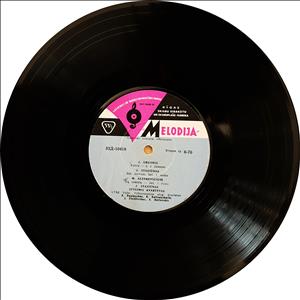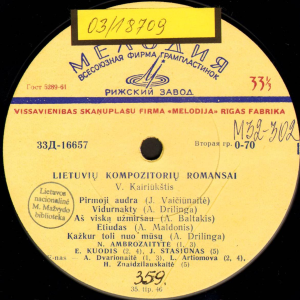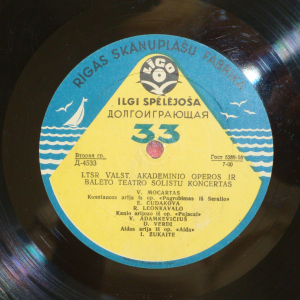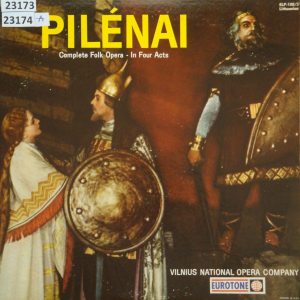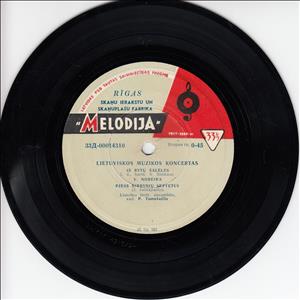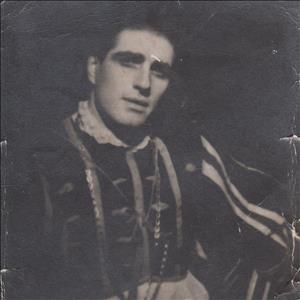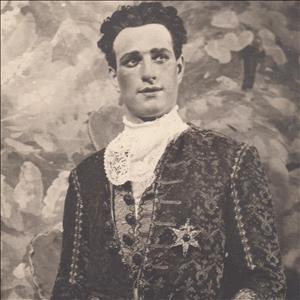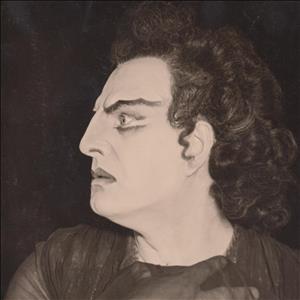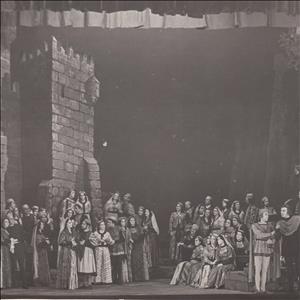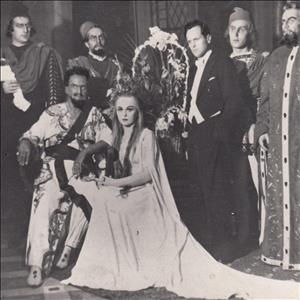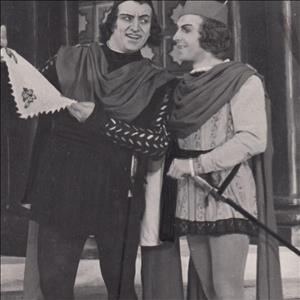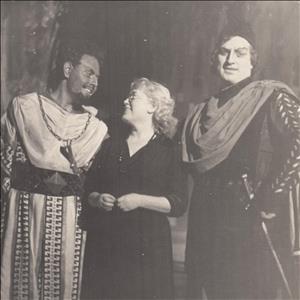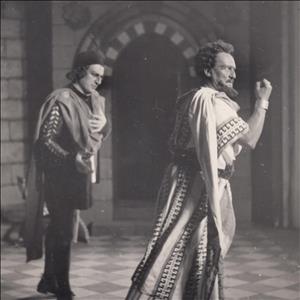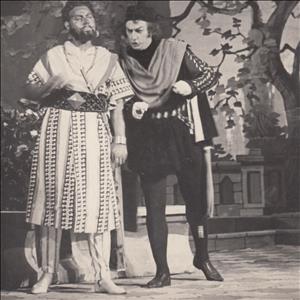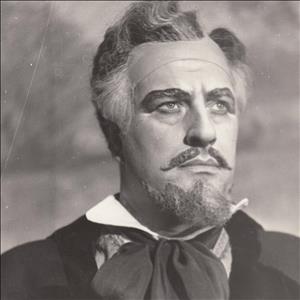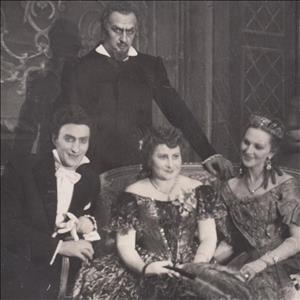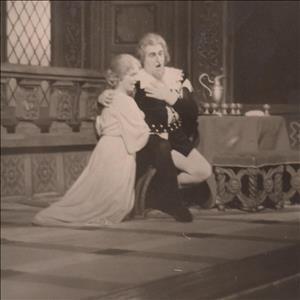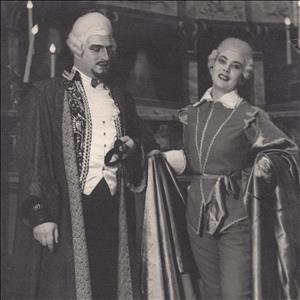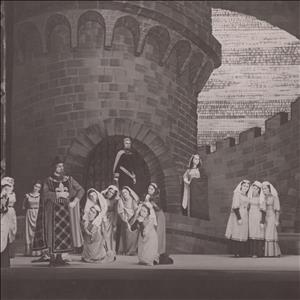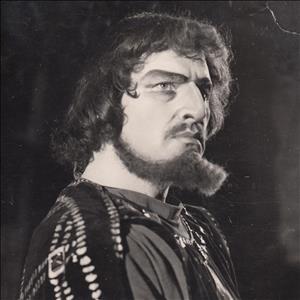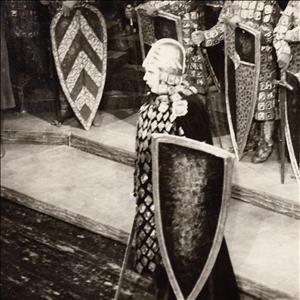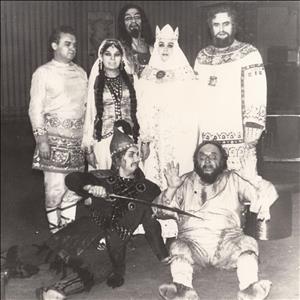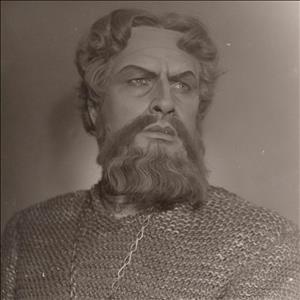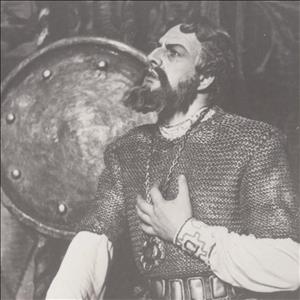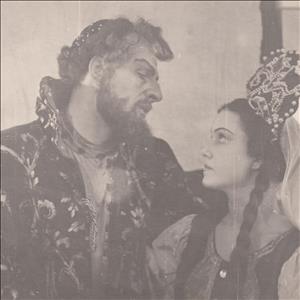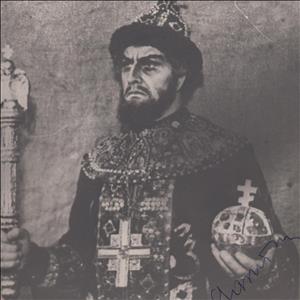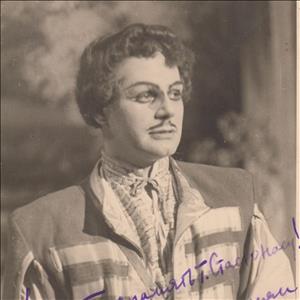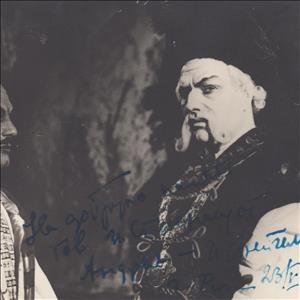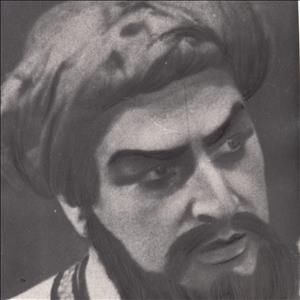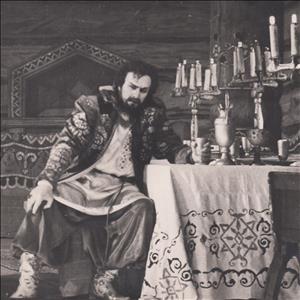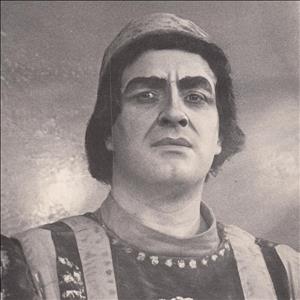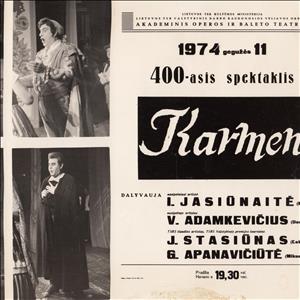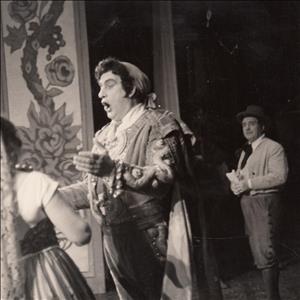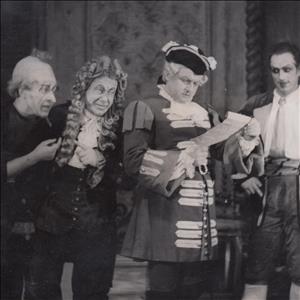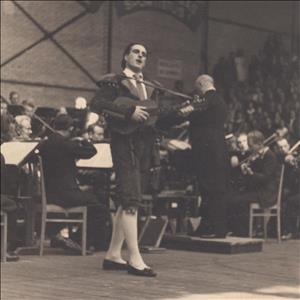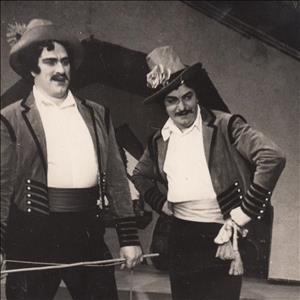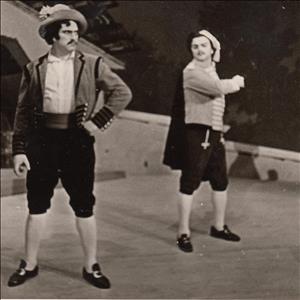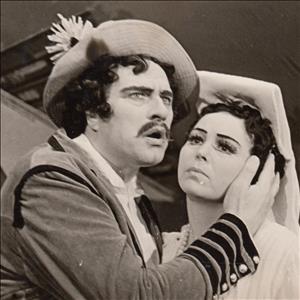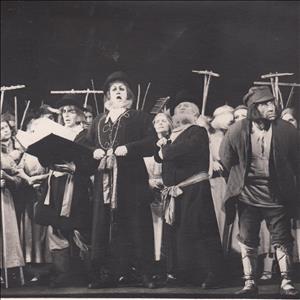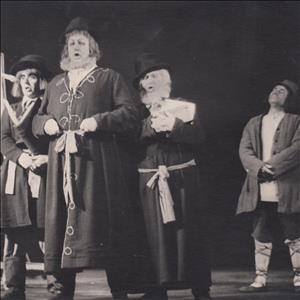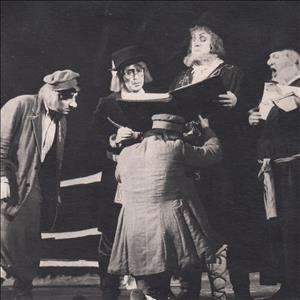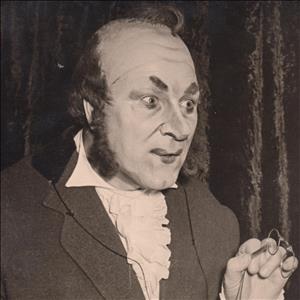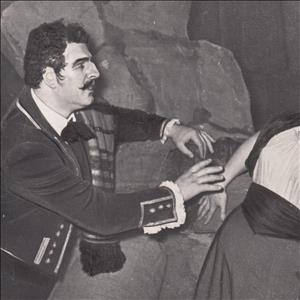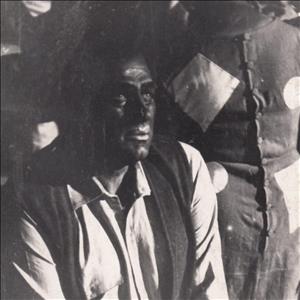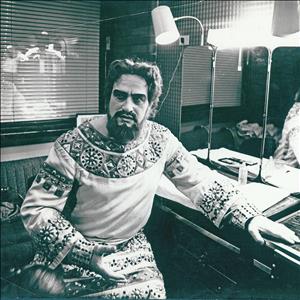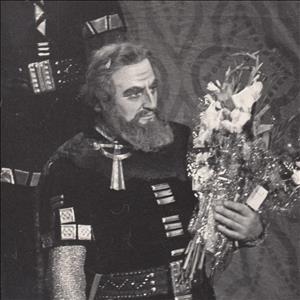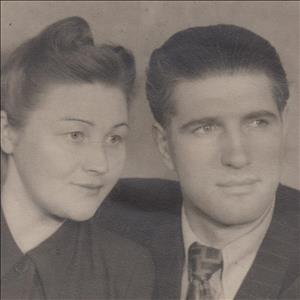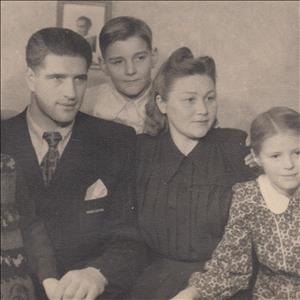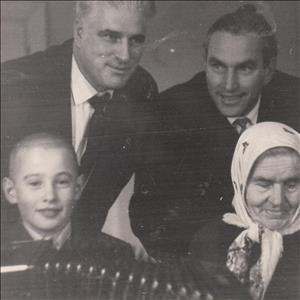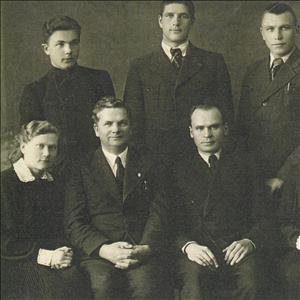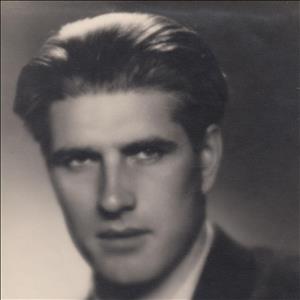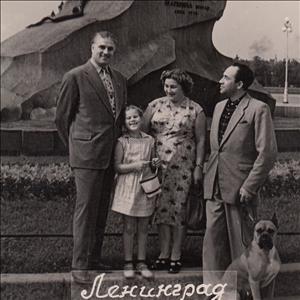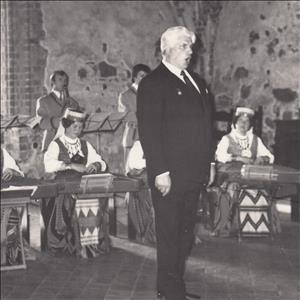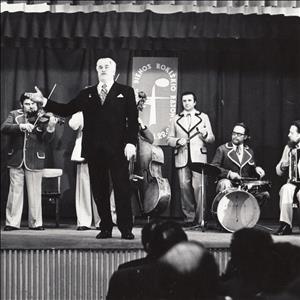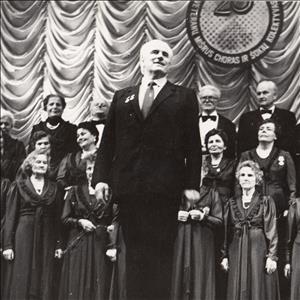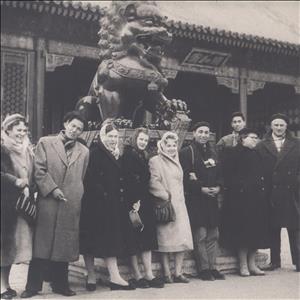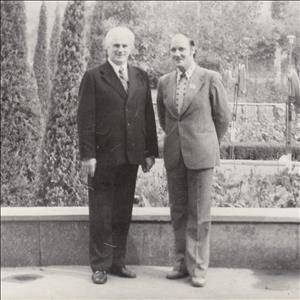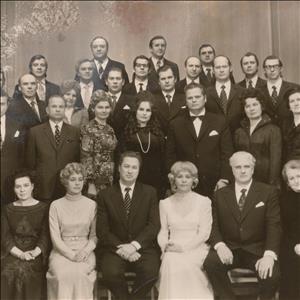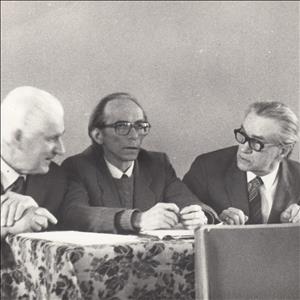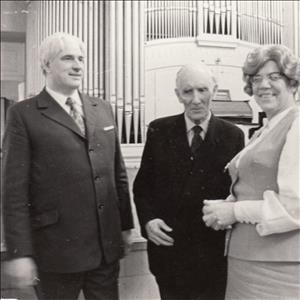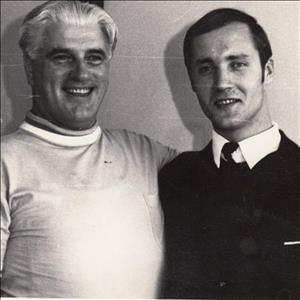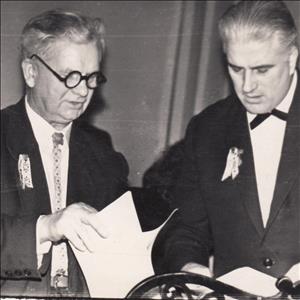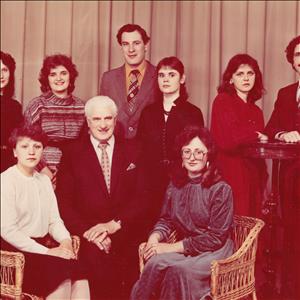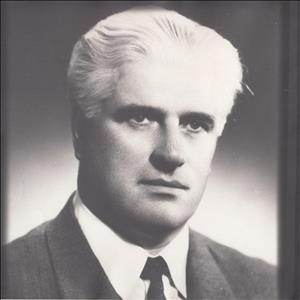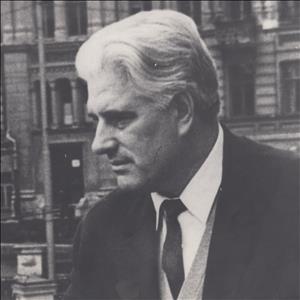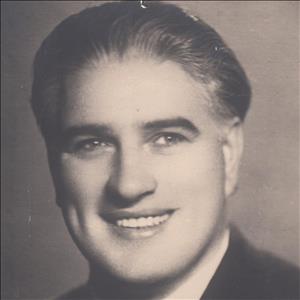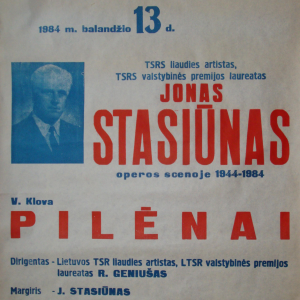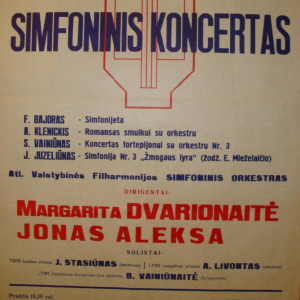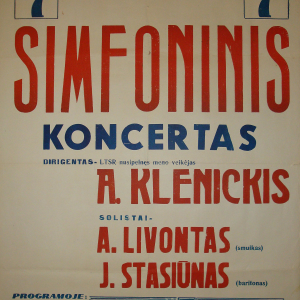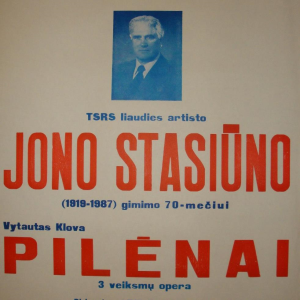
Jonas Stasiūnas (1919-1987)

Jonas Stasiūnas (1919-09-26 Ničiūnai, Kupiškis district – 1987-08-03 Vilnius) – a Lithuanian opera soloist (baritone), pedagogue of singing, professor, social figure. One of the leading opera soloists of his generation, the first performer of a number of works by Lithuanian composers. His voice stood out for a wide range and rich timbre. He was equally at ease with high lyrical baritone and character bass parts, and was considered to be the master of transformation with a unique ability to project the minute nuances of different characters – from grotesque to dramatic.
His father Antanas Stasiūnas and mother Zuzana Dudaitė lived and worked in a farm in Ničiūnai, in the vicinity of Subačius, the district of Panevėžys. There were three sons and four daughters in the family. Born on September 26, 1919 Jonas was the sixth child. The entire Stasiūnas family liked singing – the home was always filled with songs, children attended the elementary school and sang in a choir.
In 1932, while at the Panevėžys gymnasium, which had a reputation as a “singing” one, music teacher Mykolas Karka discovered Jonas’ vocal talent. Stasiūnas started as a member of a gymnasium choir, but before long he was entrusted with solo parts, which he performed in various events as well as public charity music and song gatherings.
In 1940, encouraged by his teacher Stasiūnas entered the Kaunas State Conservatoire where he started his vocal studies under the tutelage of P. Oleka (the then a stage director of the Opera and Ballet Theatre). In 1941, he entered the Musical Comedy Theatre and, while still a student, made his debut operetta appearances in Franz Lehár’s Die lustige Witwe and Der Graf von Luxemburg, F. von Suppe’s Leichte Kavallerie, Ch. Lecocq’s Le cœur et la main. In 1943, he joined the State Theatre (since 1944 – the State Opera and Ballet Theatre) opera company. Noteworthy achievement at the time was his appearance as Figaro in Rossini’s opera Il Barbiere di Siviglia. “His excellent cantilena, even voice throughout the entire range and fine vocal technique greatly contributed to the success of the role. Opera Il Barbiere di Siviglia gained substantial popularity, and Jonas Stasiūnas turned to be a devoted performer of Figaro”, wrote A. Kalinauskas (p. 13).
After the war, Stasiūnas graduated from the Conservatoire in 1948 with 14 opera roles in his repertoire among them Figaro (Rossini’s Il Barbiere di Siviglia), Germont (Verdi’s La traviata), Prince Yeletsky (Tchaikovsky’s The Queen of Spades) and Escamillo (Bizet’s Carmen). At the time he was involved in many productions and was one of the busiest singers – he was entrusted with important roles in almost every premiere.
In 1948, as a member of the State Opera and Ballet Theatre (presently the Lithuanian National Opera and Ballet Theatre) he came to Vilnius. Noteworthy achievement was his appearance as Demon in A. Rubinstein’s opera Demon. This role showcased Stasiūnas’ considerable professional competence and proved that he is already capable of working on a wide variety of opera roles. A refitted production of J. Karnavičius’ Gražina, where Stasiūnas appeared as a warrior Rimvydas, earned wide acclaim. With this role he started the gallery of heroes of this type on the opera scene.
In 1951, the production of Mussorgsky’s Boris Godunov turned to be, perhaps, the Opera and Ballet Theatre’s most significant event. For the role of Tsar Boris Stasiūnas was awarded the SSSR State Prize. In the spring of the same year he and K. Petrauskas represented Lithuania at the celebration of the 175th anniversary of the Bolshoi Theatre in Moscow. It was the young singer’s first appearance outside the Republic of Lithuania. In 1954, Stasiūnas participated in the Decade of Lithuanian Literature and Art in Moscow, where he earned recognition as Prince Igor in Borodin’s eponymous opera. “J. Stasiūnas is blessed with a rare combination of musical gift and stage presence, which are precisely what the role of Price Igor requires: height, majestic yet flexible movement, velvety voice of wide range…” wrote Russian press (Kalinauskas, p. 25). In 1954, for this role the singer was honoured with the title of the Distinguished Artist of the LSSR. In the course of time his voice matured and changed, his vocal mastery grew and he started turning to dramatic roles such as Count Tomsky (Tchaikovsky’s The Queen of Spades), Baron Scarpia (Puccini’s Tosca), Mazeppa (Tchaikovsky’s Mazeppa), Iago (Verdi’s Otello), Rigoletto (Verdi’s Rigoletto), etc. Margiris in V. Klova’s Pilėnai (Defenders of the Castle) was among his highlights on the Lithuanian opera scene. This opera received rave reviews not only within the Republic of Lithuania, but also Moscow and Leningrad. Stasiūnas sang Margiris for 30 years appearing as the Duke 108 times.
In 1957, for contributions to opera art the singer was merited with the title of the People’s Artist of the Republic, in 1964 – the People’s Artist of the SSSR.
On concert scene Stasiūnas took part in performance of a number of large-scale opuses including Beethoven’s Ninth Symphony, Verdi’s Requiem, Rachmaninov’s cantata Spring, J. Juzeliūnas’ Third Symphony Žmogaus lyra (Man’s Lyre), etc. He was also admired as a performer of folksongs, which he sang in over 1500 concerts around Lithuania. As a folksong performer he often collaborated with folk instrument ensembles “Sutartinė” and “Armonika”, also as a duo with his daughter Aušra Stasiūnaitė (mezzo-soprano).
Opera productions and concert programmes took him around Lithuania, also to Belarus, Bulgaria, Czech Republic, Latvia, Poland, Moldova, Russia, the Ukraine, Transcaucasia, China and Mongolia.
The singer did numerous recordings in Radio, TV and Recording studios. The Lithuanian Radio Archive houses almost three hundred of his recordings.
Since 1962 to his death he taught at the Lithuanian State Conservatoire (presently the Lithuanian Academy of Music and Theatre). In 1983, he was endowed with the professorship. The list of his graduates includes such names as Eugenijus Vasilevskis, Pranas Zaremba, B. Bagdonavičius and D. Milkevičius among others.
For four decades Stasiūnas was the soloist with the Lithuanian Opera and Ballet Theatre, where he appeared in almost fifty roles. He bid farewell to the opera stage in 1984 as the legendary Margiris.
In his book The Lithuanian National Opera and Ballet Theatre musicologist Jonas Bruveris writes about Stasiūnas: “One of the foremost baritones in the history of the theatre”.
Stasiūnas died on August 3, 1987. Buried in the Antakalnis Cemetery in Vilnius.
Geležiai town boasts Jonas Stasiūnas street.
Operas
Ch. Gounod
The Duke, Count Capulet, “Romeo et Juliette”, 1942, 1961
Valentin, “Faust”, 1945
R. Leoncavllo
Silvio – 1942, Tonio – 1955, “Pagliacci”
E. Humperdinck
Father, “Hansel and Gretel”, 1942
R. Wagner
“Lohengrin”, 1943
Telramund, “Lohengrin”, 1969
G. Verdi
The King of Egypt, “Aida”, 1944
Germont, “La traviata” , 1945
Amonasro, “Aida”, 1947
Iago, “Otello”, 1955
Guy de Montfort, “Les vêpres siciliennes”, 1961
Rigoletto, “Rigoletto”, 1965
Count Anckarström, “Un ballo in maschera”, 1967
P. Mascagni
Alfio, “Cavalleria rusticana”, 1945
M. Mussorgsky
Pimen, “Boris Godunov”, 1944
Boris Godunov, “Boris Godunov, 1950
V. Muradeli
“The Great Friendship”, 1947
P. Tchaikovsky
Prince Yeletsky, Count Tomsky, “The Queen of Spades” 1945, 1950
Mazeppa, “Mazeppa”, 1951
Ibn-Hakia, a Moorish physician, “Iolanta”, 1962
G. Rossini
Figaro, “The Barber of Seville”, 1945
G. Bizet
Escamillo, “Carmen”, 1946
A. Rubinstein
Sinodal's servant, “The Demon”, 1949
J. Karnavičius
Rimvydas, Jaunas bajoras “Gražina”, 1949, 1950
G. Puccini
Scarpio, “Tosca”, 1951
Jack Rance, “La fanciulla del West”, 1968
N. Rimsky-Korsakov
Grigory Gryaznoy, “The Tsar's Bride”, 1952
A. Borodin
Igor, “Prince Igor”, 1952
A. Račiūnas
Jaunasis Sakalas, “Marytė”, 1953
T. Chrenikov
Listrat, “Into the Storm”, 1954
V. Klova
Margiris “Pilėnai”, 1956 (pirmasis atlikėjas)
Pulkininkas, “Duktė”, 1960
Ulrichas fon Jungingenas, “Du kalavijai”, 1966
Juodasis ponas, “Ave vita”, 1974
E. D'Albert
Sebastiano, “Tiefland”, 1956
B. Dvarionas
Radvila, “Dalia”, 1959 (First Performer)
F. Auber
Milord, “Fra Diavolo”, 1960
G. Massenet
Monsieur de Brétigny, “Manon”, 1964
S. Prokofjev
King of Clubs, “The Love for Three Oranges”, 1965
C. Orff
The king, “Die Kluge”, 1966
S. Rachmaninov
Lanciotto, “Francesca da Rimini”, 1966
Aleko, “Aleko”, 1966
G. Gershwin
Porgy, “Porgy and Bess”, 1968
Jonas Stasiūnas and Juozas Indra - Atskrend Sakalėlis
